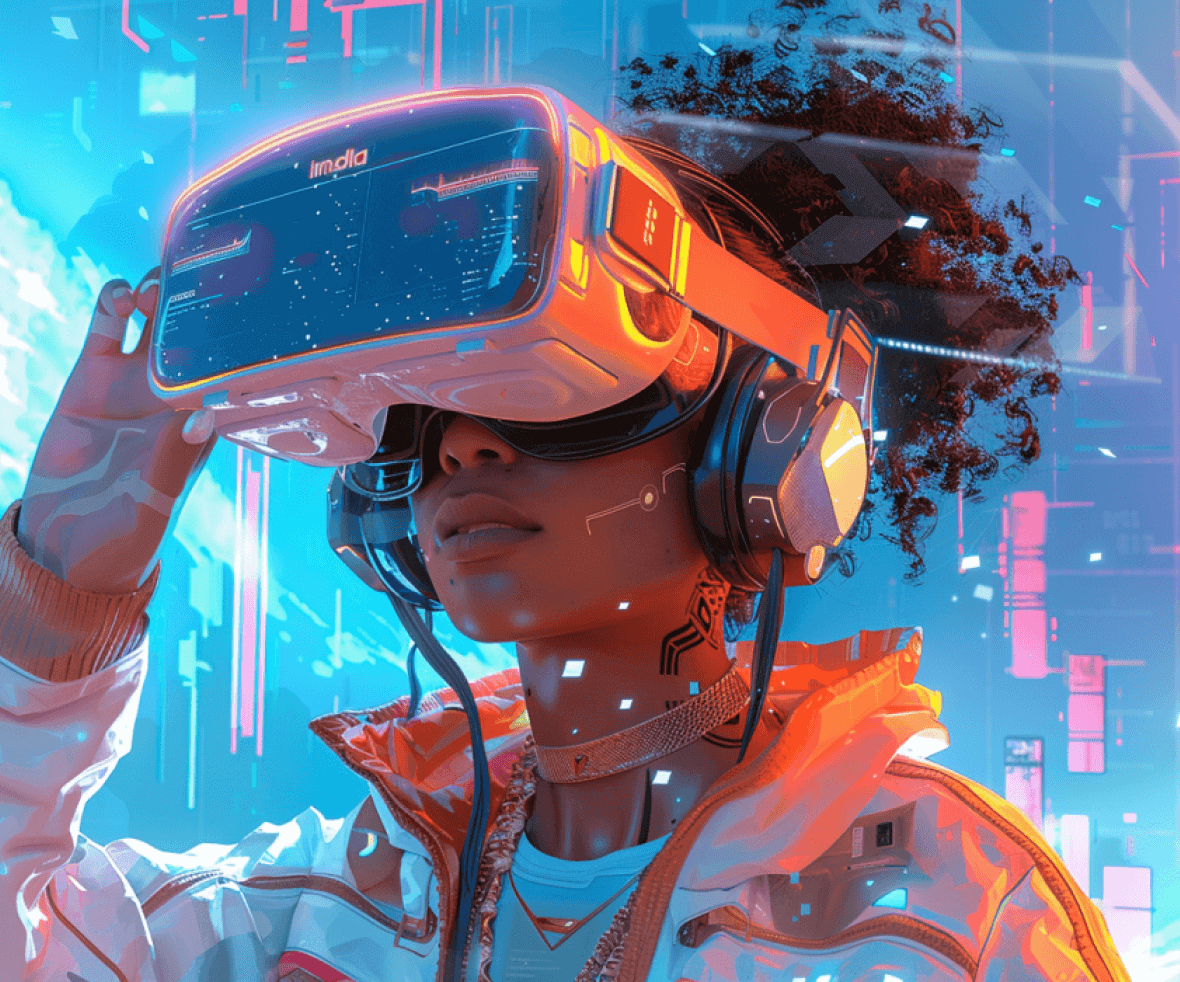Virtual Reality(VR) is the latest buzzword; it’s something all the biggest tech giants like Google, Facebook, Samsung, and many others are investing in. Virtual reality has been around for a while, with the first head-mounted display being developed in 1968 to be precise, but it ended up becoming nothing more than a lab experiment.
Finally, due to the advancements in commercially viable technology, VR has become a reality. Building a believable UX in virtual reality targetted products is not a game to play. Before that, let’s understand what Virtual Reality is.
What is Virtual Reality?
What exactly is Virtual Reality? Virtual reality is creating a completely artificial environment that stimulates the real-world senses of vision and sounds through computer-generated stimulation. VR is essentially immersive software. It uses a headset that fills your entire field of view with an image.
You will be framed inside a virtual world with virtual things with which you can interact, play, design, and experience. Achieving the best user experience is the key to the success of the entire concept of VR.

UX in Virtual Reality
User experience isn’t limited to just apps and websites, it is also used in various other products and services. User experience is about solving the user’s problems and creating a memorable experience. Virtual reality is a 3D experience, and designing for a 3D environment differs substantially from the 2D desktop environment, and comes with its own set of challenges.
UX can be used to help solve these challenges, as follows :
1. Research
VR is pulling an illusion over the brain. When using a VR headset, the brain is trying to make sense of its environment. If the VR environment is too realistic, it can overwhelm the brain, which can cause the user to experience motion sickness, nausea, and disorientation. Hence, user research and good design become even more crucial to safeguard the user.
VR is an upcoming technology for which universal design conventions are yet to be established. Hence research becomes even more important.

2. Design
Traditional UI design is limited to fixed dimensions for its canvas. VR allows creators to utilize a full 360-degree canvas. Hence, A VR user interface doesn’t have to reflect a traditional user interface. In VR, the interactions are less likely to be clickable objects like a button and more likely to be fluid movements like head-tracking, motion-tracking, and eye-tracking.
Eye-tracking software has existed for a long time and even allows designers to see areas on a screen a user is focusing on. But in VR, eye-tracking technology reads the user’s eye patterns and allows for new affordances simply by looking at things in the environment. E.g., Currently, a popular method of navigating a scene is by using “blink” or “teleportation” controls which allow the user to maneuver a scene by jumping from place to place- providing comfort and realism

Innovation in Virtual Reality
There is a huge scope for innovation when designing for VR. When designing for VR, the important question is User comfort vs. Realism. On the one hand, you don’t want to constrain the user’s movements in the scene to disrupt presence.
On the other hand, you don’t want to allow too much freedom such that the movements become simply too unrealistic for the brain to handle. Achieving a balance is the key to designing an experience for VR; the interactions have to mirror the real world while making the user feel comfortable. User experience and virtual reality are both rapidly evolving subjects. Their definitions evolve as the industry evolves, and new design conventions are introduced.
Conclusion
Virtual Reality presents a unique landscape for UX design. By understanding the challenges and opportunities it offers, designers can create immersive and engaging experiences that prioritize user comfort and satisfaction. As VR technology continues to evolve, UX design will play a critical role in shaping the future of this exciting medium.
Are you looking to explore the possibilities of VR for your business? Look no further than, a leading digital design agency that creates innovative and user-centered VR experiences that will captivate your audience.
Contact us today to discuss your VR design project and see how we can help you bring your vision to life.



